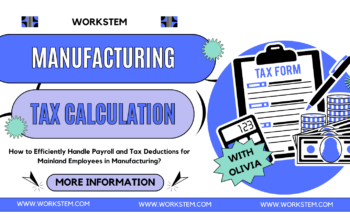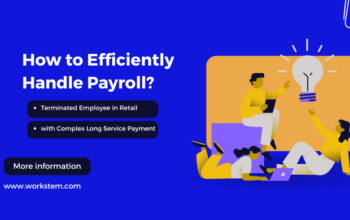365 days a year that we all clearly know, employee does need time off, but not happy with only a weekend. How we can motivate their efficiency by offering them Annual Leave and Statutory/Public Leave together, to enjoy a long vacation to recharge to back to work. Paid Annual Leave is part of the compensation, what should we be aware of?
How many days of paid annual leave are there in a year?
According to the Employment Ordinance, employees who have been employed under a continuous contract for 12 months are entitled to annual leave with pay. An employee’s entitlement to paid annual leave increases progressively from seven days to a maximum of 14 days according to his length of service. Please refer to the table of “Annual Leave Entitlements” below.
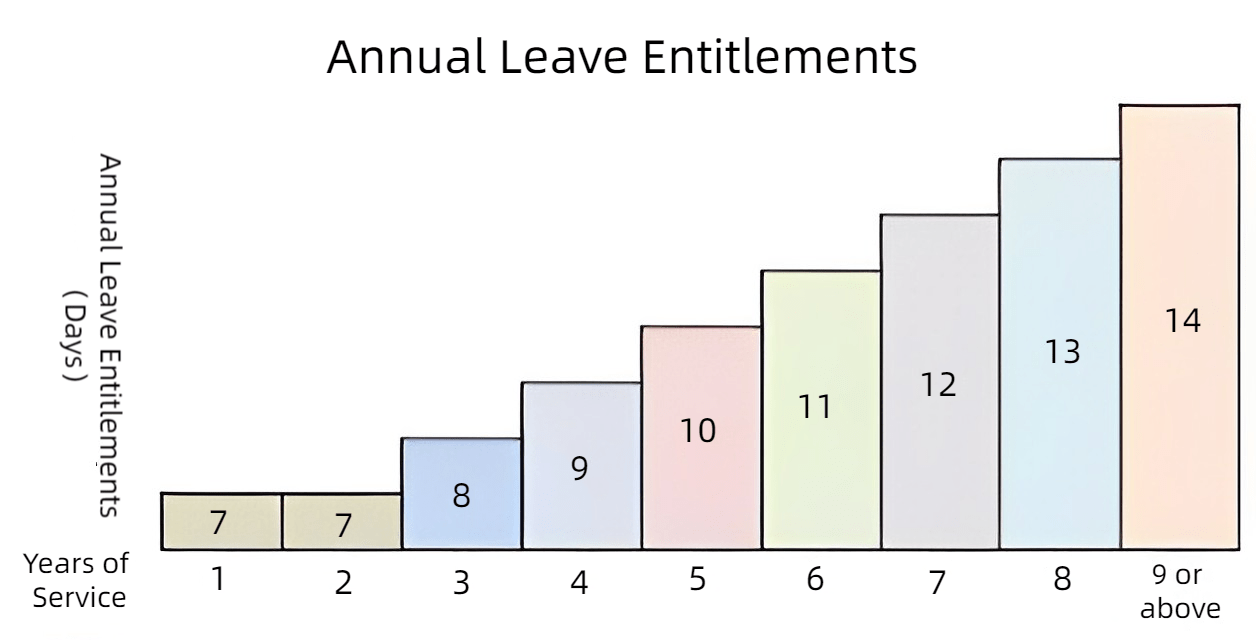
*An employer who does not allow employees to take annual leave is liable to prosecution and, upon conviction, to a fine of HK$50,000.
How to approve an employee’s application for paid annual leave?
As one of the employee benefits, applying for paid annual leave may seem like there are no other additional rules, however, it is not. More specifically, the number of days off is determined by the total number of paid annual leave:
*An employee shall take the paid annual leave to which he is entitled within the following period of 12 months.*
The time of the leave should be appointed by the employer after consultation with the employee or his representative, confirmed by written notice to the employee at least 14 days in advance unless a shorter period has been mutually agreed.
*If an employee has not been employed for 12 months in the common leave year, the employer should calculate his leave entitlement on a pro-rata basis.
Paid annual leave should be granted for an unbroken period. If the employee so requests, it may be granted in the following manner:
| Leave entitlement not exceeding 10 days | up to 3 days can be granted separately; the balance should be granted consecutively |
| Leave entitlement exceeding 10 days | at least 7 days should be granted consecutively |
Restriction on Pay in lieu of Leave
According to the Employment Ordinance, regardless of whether an employee is entitled to holiday pay, an employer should grant his employee a statutory holiday, or arrange an “alternative holiday” or “substituted holiday”. An employer must not make any form of payment to the employee in lieu of granting a holiday. In other words, “buy-out” of a holiday is not allowed. However, An employee may choose to accept payment in lieu of the part of his leave entitlement that exceeds 10 days.
Example: An employee who is entitled to 12 days of paid annual leave may choose to take only 10 days of paid annual leave and accept payment from the employer in lieu of 2 days of annual leave.
How to calculate if paid annual leave is converted into payment?
The daily rate of annual leave pay is a sum equivalent to the average daily wages earned by an employee in the 12-month period preceding the following specified dates.
| Day(s) of Annual Leave | Specified Dates |
| 1 day | Day of the annual leave |
| More than 1 consecutive day | First day of the annual leave |
NOTE: In calculating the average daily wages, an employer has to exclude
(i) the periods for which an employee is not paid his wages or full wages, including rest day, statutory holiday, annual leave, sickness day, maternity leave, paternity leave, sick leave due to work injuries, or leave taken with the agreement of the employer, and any normal working day on which the employee is not provided by the employer with work; together with (ii) the sum paid to the employee for such periods.
If an employee is employed for less than 12 months, the calculation shall be based on the shorter period, which also depends on the company’s usual practice. Annual leave pay should be paid to the employee not later than the normal payday after the period of annual leave taken.
How is the remaining paid annual leave calculated when an employee leaves the company?
In any case, if an employee resigns after passing the probationary period, even if he/she has not worked for one year, the employee will save some paid annual leave that has been not taken yet, and the number of annual leave days is calculated as follows:

Calculation of Annual Leave Pay on Termination of Employment Contract:
* This refers to any untaken annual accrued in the previous leave year.
Example:
Calculate 7-day annual leave pay
Assumption
- Wage: HK$9,000 per month, paid on rest days
- Wages earned during the 12-month period preceding the first day of annual leave: HK$108,000, including wages earned at work and holiday payments
- Leave taken during the 12 months: 71 days leave with full pay, including 52 rest days; 12 statutory holidays; 7 annual leave days
Periods and wages to be disregarded
- Since the employee was not paid less than full wages for taking leave during the 12-month period, the period and amount to be excluded are both HK$0.
Calculating holiday pay on the basis of the 12-month average
- Calculating the average daily wages earned in 12 months:
(HK$108,000 – 0 (HK$)/ (365 – 0 (days)= HK$296
- Calculate 7-day annual leave pay:
HK$296 x 7 = HK$2,072
NOTE*Restriction on payment of annual leave: Annual leave pay should be paid to the employee not later than the normal payday after the period of annual leave taken. If an employer who fails to pay annual leave pay to an employee is liable to prosecution and, upon conviction, to a fine of HK$50,000.
How to calculate the annual leave left by resignation into the payment?
Confirm the last day
The employer must know which day is the last working day and clearly stated in the resignation letter, and then the employer will negotiate with the employee according to the employment contract. In the most common case, the notice period in the contract is one month. Assuming that employee A resigns on June 10, he can retire as soon as July 9. If A wants to leave early, he must obtain the employer’s consent or pay the employee a payment in lieu of notice.
How to calculate payment in lieu of notice?
The amount of payment in lieu of notice is equal to “the average daily wage in the past year X the number of early leave days”.
Assuming that the monthly wage of employees is HK$20,000, the average daily salary is HK$20,000 X 12 / 365 days = HK$657.5
Paid annual leave is paid on a daily basis
According to the Employment Ordinance, employees are entitled to holiday pay as long as they have been employed under a continuous contract for 3 months. When the employment contract is terminated, if there is still untaken annual leave, wages can be obtained in lieu of the annual leave. The value of each day of paid annual leave is equal to the average daily wage of employees in the past year.
How many days of annual leave are counted?
If the employee has been employed for more than 3 months but less than 12 months, the number of annual leave must be calculated proportionally. The formula is “Number of annual leave days X number of employment days / 365 days”.
Assuming that an employee enjoys 12 days of annual leave every year, the last working day is the 200th day after taking office, and no major leave was taken during the tenure period. The remaining annual leave when resigning is 6.5 days, multiplied by the average daily wage, which is the amount that annual leave pay can be retrieved when resigning.
It is not difficult to see from the above that it is easy to make mistakes if you are not careful about the issue of paid annual leave, approval, employees’ “buy-out” of a holiday, and the remaining annual leave after leaving the company. Not only will you have disputes with your employees, but you will also risk fines and imprisonment. So HR always complains.
How do Workstem users use the system to handle issues such as annual leave pay?
Employers can set annual leave rules built into the system on the web or app, and can choose whether to carry forward to the next year, whether to limit the application date, etc. Employers can also easily view employee leave application records and choose whether to approve or not.
1) Click the Leave Type to view the leave policy required by the built-in Hong Kong enterprises in the system. If you need to add other holiday types, you can tap “Add” to supplement the list for all your individual needs.
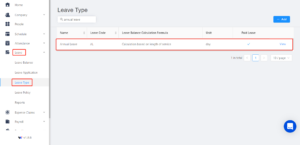
2) Click the Leave Policy, and select the type of annual leave(AL). After completing the formula setting, no other operations are required, and the system will automatically allocate the leave balance for employees to apply.
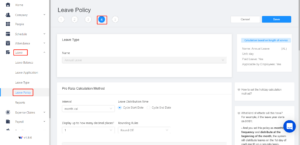
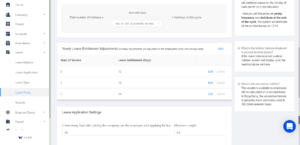
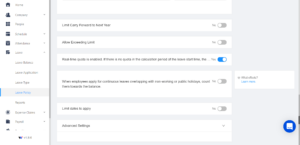
3) After completing the Leave setting, employees can easily apply at the terminal by themselves. Employers or HR can click on leave applications to view application records. One-touch approval.
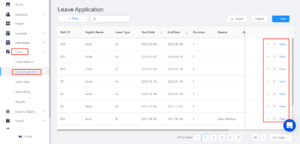
4) Payroll calculation issues from annual leave. When an employee “buy-out” of a holiday and leaves the company, do I need to export the data for manual calculation? No no no!
4) For the payroll calculation issue arising from annual leave, do employees need to export the data for manual calculation when they “buy-out” of a holiday and calculate the annual leave left by resignation into the payment? No no no!
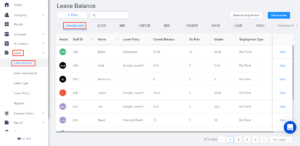
As a one-stop human resource system, Workstem can calculate the employee’s paid annual leave balance and related wage settlement according to the employee’s entry date and historical leave records through the Leave and Payroll function settings.
The Workstem system can also provides a full range of solutions to help you business management of other HR processes, such as Rostering、Attendance、Leave, MPF and tax return management, etc., help you can truly realize digital transformation and improve management efficiency and employee satisfaction.
Read More:
How to Calculate Annual Leave Payment on Termination of Employment Contract?





